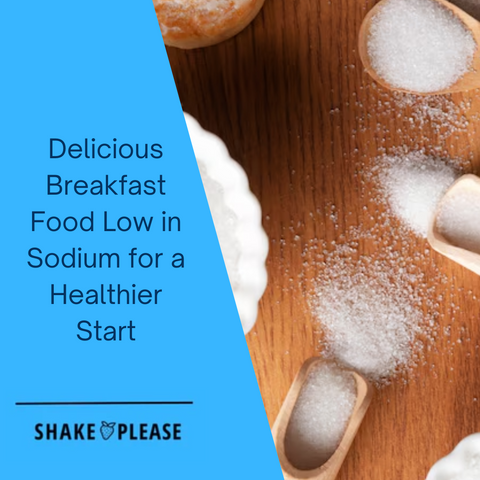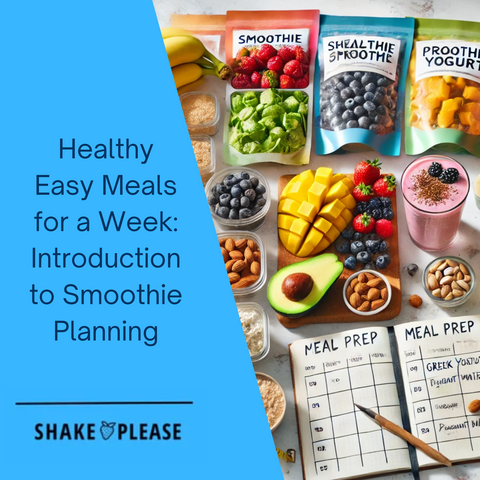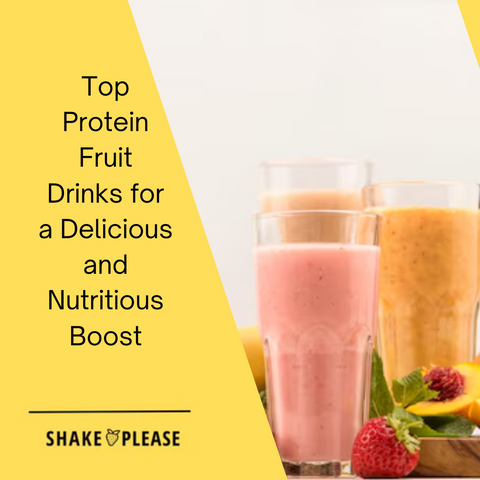
Understanding the Importance of a Low-Sodium Diet
Starting your day with a low-sodium breakfast can significantly improve your overall health. Incorporating low-sodium meals into breakfast is crucial for promoting heart health and overall well-being. Sodium is an essential nutrient, but too much of it can have serious health consequences. Understanding why managing sodium intake matters can help you make smarter food choices and support long-term well-being.
The Risks of Excessive Sodium Intake
-
High Blood Pressure: Consuming too much sodium causes your body to retain water, which increases the volume of blood in your vessels. This added pressure can lead to hypertension, a major risk factor for heart disease.
-
Heart Disease: Chronic high blood pressure puts a strain on your heart, increasing the risk of heart attacks, heart failure, and other cardiovascular issues.
-
Kidney Stress: Your kidneys filter excess sodium from your blood. When you consume too much, it forces them to work harder, which can lead to kidney disease over time.
-
Fluid Retention and Bloating: High sodium intake can cause your body to retain water, leading to uncomfortable bloating and swelling in the hands, feet, or face.
-
Increased Stroke Risk: Elevated blood pressure from excessive sodium intake increases your likelihood of experiencing a stroke.
Being aware of these risks can motivate you to make healthier dietary decisions, starting with your morning meal.
Benefits of a Low-Sodium Diet
-
Lowers Blood Pressure: Reducing sodium intake helps your body maintain a healthier fluid balance, leading to lower blood pressure and decreased strain on your cardiovascular system. Consuming lower sodium foods is crucial for promoting better health outcomes, particularly for heart health.
-
Reduces Heart Disease Risk: A low-sodium diet supports better heart health by preventing hypertension and improving overall circulation.
-
Improves Kidney Function: Less sodium means your kidneys don’t have to work as hard, which helps prevent kidney damage and keeps your body’s filtration system running smoothly.
-
Boosts Energy and Focus: High sodium levels can leave you feeling sluggish and bloated. Cutting back can help you feel more energized and improve mental clarity throughout the day.
-
Alleviates Symptoms of Existing Conditions: If you’re already dealing with high blood pressure, kidney disease, or heart issues, a low-sodium diet can help manage these conditions and reduce symptoms.
Making Low-Sodium Choices for Breakfast
Starting your day with a low-sodium breakfast can set the tone for healthier eating throughout the day. Swap out processed, salty foods for fresh, whole ingredients that fuel your body without the added sodium. You’ll not only feel better but also reduce your risk of chronic diseases over time.
Setting a Healthy Sodium Intake Goal
Recommended Daily Sodium Intake
Understanding salt intake and managing your daily sodium intake is key to maintaining good health. While sodium is essential for nerve function and muscle contraction, most people consume far more than they need, which can lead to serious health issues over time.
-
General Recommendations:
The American Heart Association (AHA) recommends limiting sodium intake to no more than 2,300 milligrams per day. This is roughly equivalent to one teaspoon of table salt. Unfortunately, many processed and packaged foods contain hidden sodium, making it easy to exceed this limit without realizing it. -
Optimal Intake for Better Health:
For optimal heart health, the AHA suggests aiming for 1,500 milligrams or less per day, especially for individuals with high blood pressure, heart disease, or kidney conditions. This lower target is associated with reduced risks of hypertension and cardiovascular disease. -
Tracking and Adjusting:
To stay within your sodium goals, it’s important to read nutrition labels and be aware of high-sodium foods like canned soups, processed meats, and packaged snacks. Opt for fresh ingredients and prepare meals at home whenever possible, as restaurant and takeout meals tend to be high in sodium.Tools like food tracking apps or simply maintaining a daily food journal can help monitor your intake and make adjustments as needed to align with your health goals.
Healthy Breakfast Foods to Include
A low-sodium breakfast doesn’t have to be bland or repetitive. By incorporating a mix of nutrient-dense grains, proteins, fruits, and vegetables, you can enjoy a flavorful and satisfying meal while keeping your overall sodium intake well in check.
Opt for low sodium versions of common breakfast foods such as canned foods, packaged cereals, and processed meats to align with dietary sodium goals.
1. Low-Sodium Grains
Whole grains provide essential fiber, vitamins, and minerals, helping to maintain steady energy levels throughout the morning. Unlike processed grains, they contain low fat and minimal sodium, making them an excellent choice for a healthy breakfast.
-
Oatmeal – A naturally low-sodium grain that is high in fiber and helps keep you full longer. Prepare it with unsweetened almond milk or coconut milk and top with fresh fruit for added nutrients.
-
Quinoa – A complete protein that is low in sodium and rich in fiber. Use it as a base for a savory breakfast bowl with vegetables or mix it with Greek yogurt and fruit for a hearty morning meal.
-
Brown Rice – A filling, low-sodium option that pairs well with scrambled eggs or roasted vegetables. For a quick breakfast, try a brown rice porridge with cinnamon and bananas.
Which Fruit is Highest in Fiber? Top Picks for a Healthier Gut
2. Low-Sodium Proteins
Getting enough protein in the morning helps maintain muscle health, balance blood sugar levels, and keep you full throughout the day.
-
Egg Whites – A high-protein, low-sodium choice that can be scrambled, made into an omelet, or used in a breakfast wrap with fresh veggies.
-
Greek Yogurt – Packed with protein and probiotics, plain Greek yogurt is naturally low in sodium. Add berries, nuts, or a drizzle of honey for extra flavor without processed sugars.
-
Lean Meats (Chicken & Turkey) – If you prefer a savory breakfast, opt for unsalted, skinless chicken or turkey. These are great additions to breakfast wraps, sandwiches, or quinoa bowls.
3. Low-Sodium Fruits and Vegetables
Fruits and vegetables are naturally low in sodium and loaded with vitamins, antioxidants, and fiber, making them an essential part of a balanced breakfast.
-
Fresh Fruits – Berries, bananas, apples, oranges, and pears are all excellent low-sodium options. Blend them into a smoothie, mix them into oatmeal, or enjoy them as a topping for Greek yogurt.
-
Fresh Vegetables – Spinach, bell peppers, mushrooms, cucumbers, and tomatoes add natural flavors and nutrients to omelets, grain bowls, and wraps.
-
Frozen Fruits & Vegetables – Frozen berries, spinach, peas, and kale are just as nutritious as fresh ones and work well in smoothies, oatmeal, and breakfast scrambles.
Fresh and Frozen Ingredients for a Low-Sodium Breakfast
Incorporating fresh and frozen ingredients into your breakfast is a fantastic way to keep your sodium intake in check while enjoying a variety of flavors and nutrients. Fresh fruits like berries, bananas, and citrus fruits are naturally low in sodium and packed with vitamins, antioxidants, and fiber. They make excellent additions to smoothies, oatmeal, or yogurt bowls.
Fresh vegetables such as spinach, bell peppers, and mushrooms can add a burst of flavor and nutrients to your morning meal without increasing your sodium intake. Consider adding them to omelets, breakfast wraps, or grain bowls for a nutritious start to your day.
Frozen fruits and vegetables, like berries, broccoli, and peas, are just as nutritious as their fresh counterparts and offer the added convenience of a longer shelf life. They can be easily incorporated into smoothies, scrambles, or breakfast casseroles, making it simple to enjoy a low-sodium breakfast even on busy mornings.
Shake Up Your Low-Sodium Breakfast with Smoothies
Smoothies are an excellent way to pack in nutrients without relying on high-sodium ingredients. Using fresh fruits, vegetables, and unsweetened dairy or plant-based milk, you can create a delicious and filling morning drink. It is important to avoid packaged or prepared foods that are high in sodium when making smoothies.
-
Vanilla Berry Protein Smoothie – A blend of vanilla protein, Greek yogurt, and mixed berries creates a protein-packed, low-sodium smoothie that’s both refreshing and satisfying.
-
Pineapple Berry Protein Smoothie – A tropical, vitamin-rich option with pineapple, mixed berries, and plant-based protein to give you a flavorful and energizing start.
-
Chocolate Peanut Butter Banana Smoothie – A low-sodium indulgence packed with potassium and healthy fats from bananas and peanut butter, balanced with protein for a filling breakfast.
By choosing fresh, whole foods and avoiding processed or packaged breakfast items, you can maintain a low-sodium diet while still enjoying a delicious and nutrient-rich breakfast.
Low-Sodium Breakfast Ideas with Smoothies
Fresh and Frozen Ingredients for Low-Sodium Mornings
-
Fresh Fruits: Berries, bananas, and apples are naturally low in sodium and packed with fiber and antioxidants.
-
Frozen Ingredients: Frozen fruits like berries and spinach are convenient, versatile, and help you keep sodium in check.
Many prepared foods, especially packaged and processed breakfast items like bacon, canned goods, and instant oatmeal, often contain significant levels of sodium. It's important to be mindful of these choices and opt for lower-sodium alternatives.
Tasty Low-Sodium Breakfast Recipes
-
Veggie Omelette: Whip up egg whites with spinach, mushrooms, and bell peppers for a hearty, sodium-smart breakfast.
-
Low-Sodium Smoothie: Blend ShakePlease’s Pineapple Berry Protein Smoothie with unsweetened almond milk and chia seeds for a refreshing, low-sodium option packed with protein and fiber.
-
Oatmeal Breakfast Bowl: Top plain oatmeal with sliced bananas, a sprinkle of cinnamon, and a drizzle of maple syrup for natural sweetness without the sodium.
Tips for Cutting Sodium at Breakfast
Read Nutrition Labels Carefully
-
Check the Sodium Content: Look at the Nutrition Facts label to see how much sodium is in each serving.
-
Control Portions: Multiply the sodium per serving by the number of servings you’re eating.
-
Choose Low-Sodium Products: Opt for unsweetened almond milk, no-salt-added nut butters, and low-sodium bread options.
Swap Out the Salt
-
Use Herbs and Spices: Add flavor with fresh herbs, black pepper, garlic, or a squeeze of lemon instead of reaching for the salt shaker.
-
Choose Healthy Fats: Coconut milk or avocado adds richness and moisture without sodium.
-
Experiment: Play around with different spices like turmeric, cumin, or paprika to bring out new flavors.
Pick Naturally Low-Sodium Foods
-
Grains: Oats, quinoa, and brown rice are great fiber-rich, low-sodium options.
-
Proteins: Egg whites, Greek yogurt, and lean chicken or turkey are excellent, low-sodium protein sources.
-
Fruits & Veggies: Fresh and frozen fruits like bananas, apples, and berries are naturally low in sodium, as are veggies like spinach, peas, and broccoli.
Building a Balanced, Low-Sodium Breakfast Plate
Focus on Nutrition
-
Whole Foods First: Prioritize unprocessed, nutrient-dense foods like fresh fruits, vegetables, and whole grains.
-
Mix It Up: Add a variety of colors and textures to your plate to ensure you’re getting all the vitamins and minerals you need.
-
Keep It Simple: The fewer processed ingredients, the less sodium you'll consume.
Create the Perfect Low-Sodium Breakfast Plate
-
Start with Grains: Oatmeal, quinoa, or a whole-grain English muffin are fiber-rich and low in sodium.
-
Add Protein: Egg whites, Greek yogurt, or a protein smoothie like ShakePlease's Chocolate Peanut Butter Banana Protein Smoothie keep you full and satisfied.
-
Incorporate Fruits and Veggies: Fresh berries, spinach, or sliced apples add fiber, antioxidants, and natural sweetness.
-
Top It Off with Healthy Fats: Avocado, chia seeds, or a drizzle of olive oil add flavor and keep you satisfied.
Top Healthy Fats List: The Ultimate Guide
Prioritizing Nutrition and Health
Adopting a low-sodium diet can significantly reduce the risk of high blood pressure, heart disease, and stroke. By focusing on a balanced diet that includes a variety of whole, unprocessed foods, you can support your overall health and well-being.
Limiting your sodium intake and choosing low-sodium options can help you maintain a healthy lifestyle. Prioritize fresh fruits, vegetables, whole grains, and lean proteins to ensure you’re getting the nutrients your body needs without the excess sodium.
By making mindful choices and incorporating low-sodium foods into your diet, you can enjoy delicious, nutritious meals that support your health goals and enhance your quality of life.
Conclusion: Start Your Day with a Low-Sodium, Nutrient-Packed Breakfast
A low-sodium breakfast isn’t just about cutting out salt—it’s about adding in nutrient-rich, whole foods that fuel your body and mind. From hearty veggie omelettes to refreshing smoothies like ShakePlease’s Pineapple Berry Protein Smoothie, you can enjoy delicious, satisfying breakfasts that keep you energized and support your health goals.
Make small, mindful changes each morning, and you’ll feel the difference in your energy, focus, and overall well-being.





